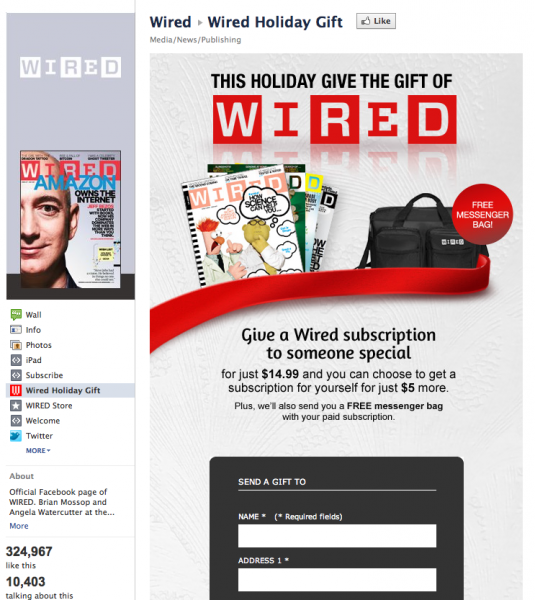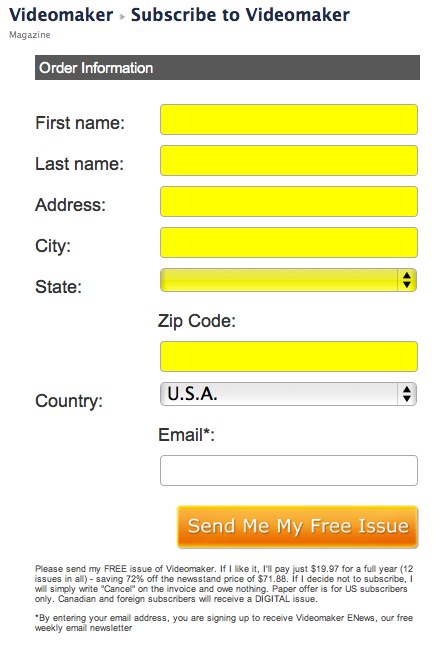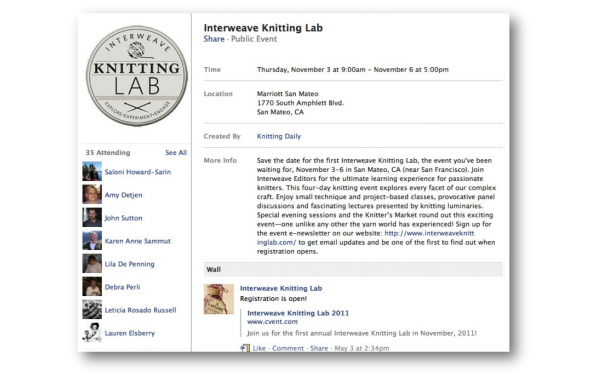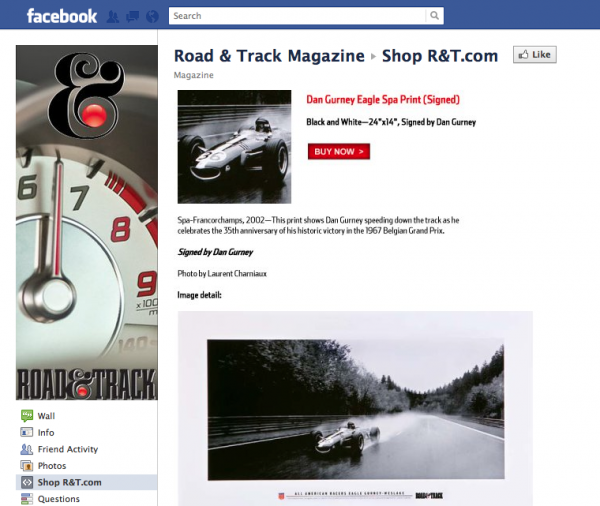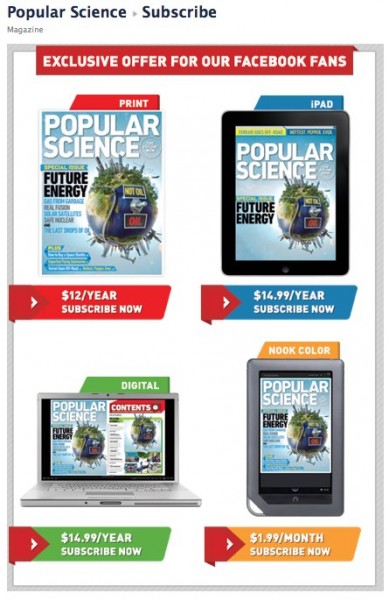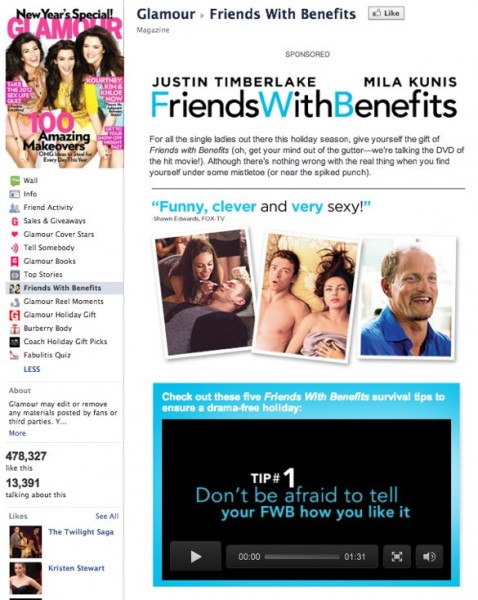Magazines on Facebook are making money and here’s how
Let’s start with a little breakdown of why Facebook just became the #1 place to generate revenue in social media.
Facebook accounts for more than half of all sharing on the web. If you’re a recipe publisher, you’re in the rare niche where Pinterest sharing and traffic may be more than Facenook. But in general, when someone wants to share something, they share it on Facebook—and this includes your promotions and sales. In fact, last year 93% of Facebook said they posted or read some kind of shopping recommendations and 66% percent of those people ended up making a purchase on Black Friday/Cyber Monday as a direct result of social media interactions with brands and family.
So if you thought Facebook was just a good way to build an online community, you’re correct—a community that builds trust and a transparent brand. What you might not have realized, was that 52% of users have said in the past that they are willing to pay more for products from a brand that they trust.
So let’s get down to it. There are publishers out there generating revenue from Facebook, and if you can think of any better than these top ten ways, I hope you share yours in the comments!
1. Promote your events
Farm Progress, who hosts The Farm Progress Show attracts thousands of people each year to this event. Naturally, they created a Facebook page specifically for those event-goers. With that page, Farm Progress gets to keep their more than 12,000 fans informed about the upcoming show months in advance. There is also duel-sided marketing genius going on here: People can tag the page in their status updates, comments and photos when they talk about the show. This keeps your page active weeks and months after your event, and when the recurring event happens again, you’ll still have an active page with an interested list of fans and past attendees.
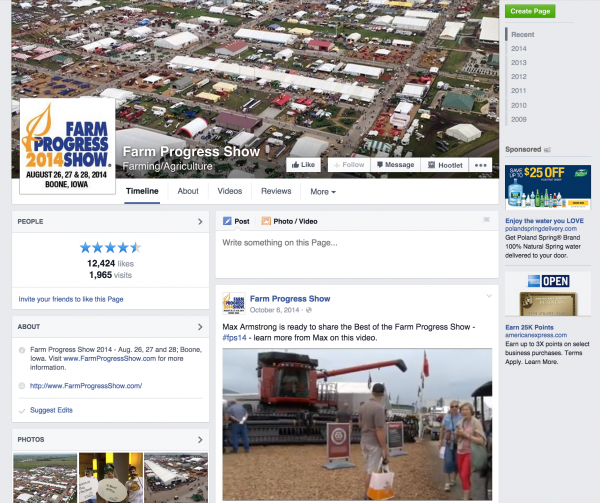
2. Drive traffic back to your website
The Economist has taken Facebook to a whole new level with the Economist hub, a tab (app) on their Facebook page that bring the Economist content to the Facebook user. This dashboard offers a quick summary of content from the homepage, which drives traffic back to the site. The Facebook app offers in-app content too, like audio segments.
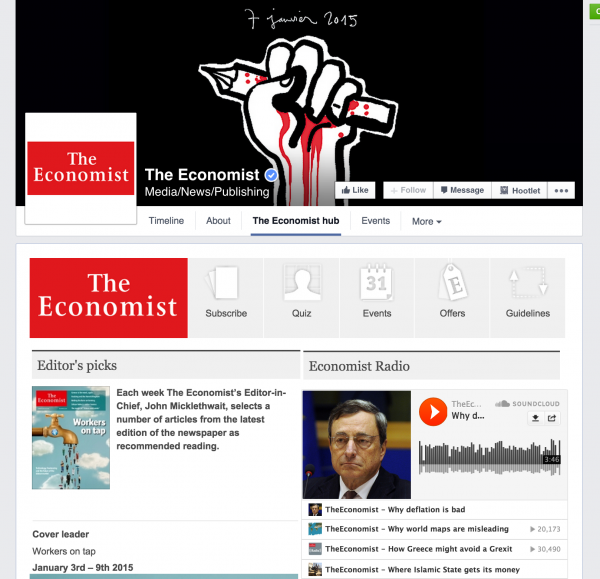
3. Create a store
Just like The Economist has brought the content to the people, Black Belt brings their store to the people. There’s a tab on their Facebook page called “shop now!” which allows their almost 400,000 fans to browse their martial arts inventory. Not to mention, they’re using their profile photo to promote the magazine cover and their header image to promote a special downloadable Bruce Lee collection.
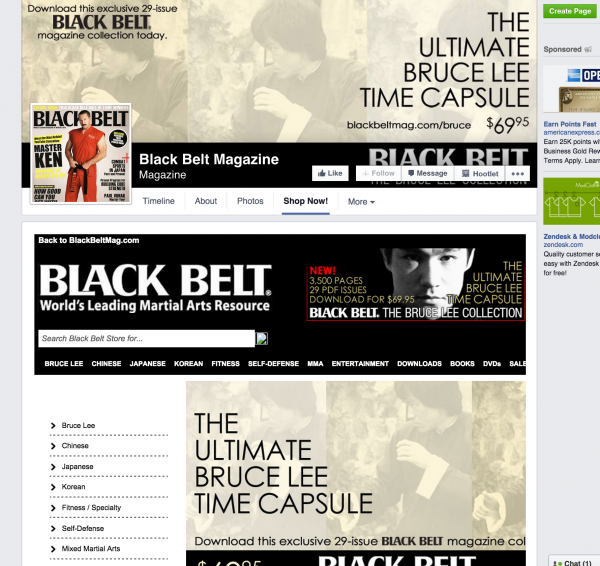
4. Sell Subscriptions
Wired Magazine did that this past holiday season by offering an easy way to purchase a gift subscription. The tab is easy to read and well branded with a simple form to fill out. They include an enticing offer and also mention an incentive for the person gifting a subscription. Now that users are trained to look to Facebook for deals and discounts from their favorite brands, you should be offering a discount on your most valuable products using the platform your audience is looking for them on.
5. Offer a Free Trial Subscription
Free trials are great ways to get your foot in the door with a potential subscriber. Videomaker magazine does a fabulous job of offering a free trial of their magazine to fans. They also include some disclaimer text which earns them bonus points. Here’s what it says: “By entering your email address, you are signing up to receive Videomaker ENews, our free weekly email newsletter”. So even if the fan abandons the order flow later on, Videomaker has still collected their email address. This is a common website strategy for many publishers too.
6. Collect Email Addresses
If you were jumping out of plane, wouldn’t you want a backup parachute in case the main one failed? That’s why you want to collect a list of “fans” and a separate list of email subscribers. If they choose to unsubscribe from one list, at least you still have their attention on the other. Your fans and email list members are each others’ safety nets.
Be sure to offer different incentives for each, though. In the example below Bon Appetite has a very simple list sign up on their page. For your list sign up tab, I’d suggest detailing your incentives for subscribing.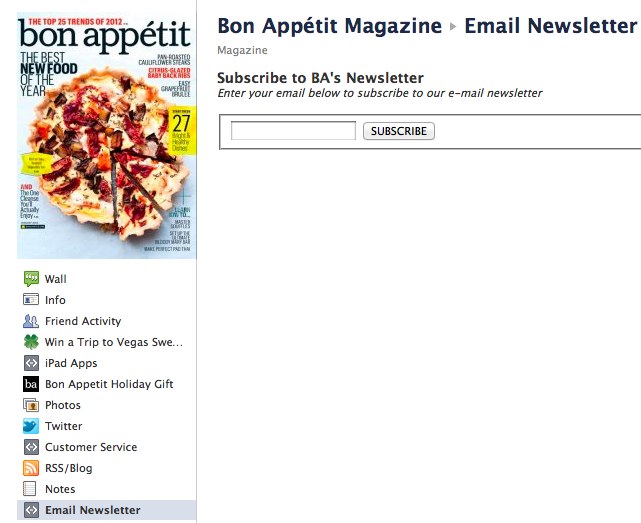
. Create a Page for Your Niche Events
Do you host a large public event each year? Does it attract crowds of people? You may want to consider what Farm Progress does for their Farm Progress Show; They create a Facebook page for it.
Their event, The Farm Progress Show attracts thousands of people each year. With their page, Farm Progress gets to keep the public informed about the upcoming show months in advance. There is also duel-sided marketing genius going on here: People can tag the page in their status updates, comments and photos when they talk about the show. This keeps your page active weeks and months after your event, and when the recurring event happens again, you’ll still have an active page with an interested list of fans and past attendees.
7. Promote your Event By Listing it on Facebook
Facebook makes it very easy to list your events. Its events platform is second to none. You have the ability to compile private or public attendee lists, post pictures from your past events and even post updates to your event wall as new details emerge. This is especially useful if you run paid events or online events like webinars that happen once.
The ability to message attendees is priceless, and like pages, events can be tagged in posts, photos and comments, which further exposes your event to the circles of everyone who’s been invited and responded to your event invitation.
In the example below, Interweave had created an event for its 2011 Knitting Lab. As previously mentioned, they also keep a Knitting Lab page for the event which continues to be updated in the off-season.
[text_ad]
8. Post Promotions Creatively
We all hate to be sold to, and our Facebook fans are no exceptions. We want to find a nice blend of informational and promotional content. It pays to be creative when posting promotional content, just look at Black Belt Magazine. This status update is a quick quote from someone who is well known in the martial arts field. Black Belt has cleverly added a link to a related video in the update. This simple status update received over 5o likes and even a few comments, even though the update links directly to a marketplace page for a book. Simple, effective and creative.

9. Create a Marketplace
Did you know that your fans can buy from your directly from Facebook page? There is an ever-growing number of shopping cart applications that you can implement directly on your page. Below is an example of the Road and Track Facebook page. Their cart system starts on Facebook and leads to another shopping cart, but mimics the look of the website shopping cart. The Wired Store is another great example.
Here is a list of professional shopping cart applications for fan pages used by publishers like Time, Newsweek, Elle, Woman’s Day and Cosmopolitan.
10. Offer Fan-Only Incentives
Just like you do for your email subscribers, you’ll want to offer special discounts and offers to your fans. This is also a great strategy to boost your fan base by requiring people to Like your page to receive these offers and discounts. Popular Science does an excellent job of displaying their fan-only offers. As they do this, they’re also educating their consumers about the various formats they can receive their publication on.
11. Sell Advertising Space
Here’s a revenue generator that you may have not thought about: Selling space on your fan page to advertisers. Glamour Magazine did just this for the movie Friends with Benefits. On the page they have a couple promotional videos as well as links to where they could purchase the movie. If you a have a budding fanbase and forward-thinking advertising partners you want want to experiment with this. Cosmopolitan is another great example, except they do it with contests.
12. Use Warm Ads
What are warm ads? They’re ads targeted to fans of your fan page. You already know that these people like your brand so why not run a Facebook campaign that targets them? Since you’re running these ads only to your fans, you’ll be paying less per click because your advertising group is smaller. Make sure the offers in these ads are really good. The last thing you want to do is offer the same promotions your fan could get if they subscribed to your email list.
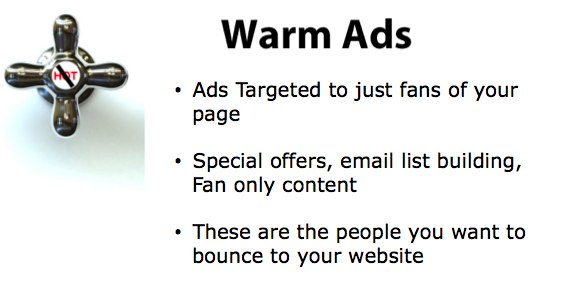
So, do you have anything to add? Let us know in the comments. If you want to learn more about these strategies, plus over 20 more ideas for driving website traffic with Facebook and building a Facebook community, check out Facebook for Publishers.
